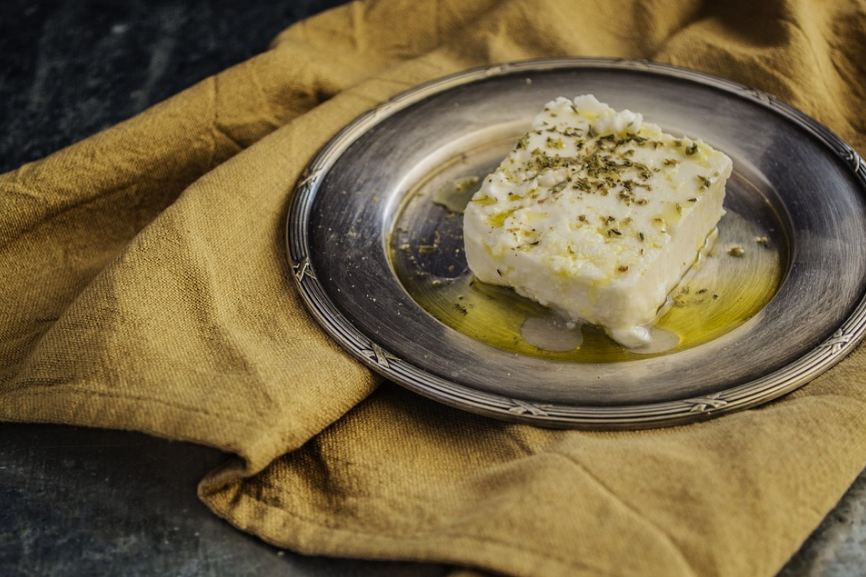Feta cheese is a Greek cheese that is made from sheep and goat’s milk. It is known to have a tangy, sharp flavor and a creamy texture in the mouth. It is also one of the homemade creations that can people love to make. And nothing compares to the fresh taste of homemade feta cheese.
This cheese has a tangy taste and crumbly texture, and it’s a favorite cheese with so many recipes that people love. And compared to other cheeses, feta cheese also contains fewer calories. Also, since it has a relatively intense flavor, you can use less cheese without sacrificing flavor. The best thing about feta cheese is it’s surprisingly easy to make at home.
If you are looking into making some homemade feta cheese, you’re in the right place. Today, we are giving you tips and steps you can follow on how to make the best feta cheese at home.
Milk
The first important factor when making feta cheese is the milk you will use. Goat or sheep’s is traditionally used. When you use goat’s milk, it gives the cheese a harder texture and a milky flavor. However, it is a little temperamental and needs more rennet to get a firm curd. Sheep’s milk, on the other hand, gives the cheese a rich, buttery flavor, and it also forms a curd well. However, this milk is difficult to find unless there’s a healthy food store in your location.
If you do not have any goat or sheep’s milk, cow’s milk is a good substitute. The cheese can become a bit more slimy or mushy, but you can still make it successfully.
Texture
The texture is also very important in feta cheese. In fact, it is its make-or-break point. When the feta cheese is slimy, it can be due to the calcium in the cheese leeching out into the brine. That can be caused by two reasons. One is that the brine solution contains a lower calcium level than the feta, and the other is that the cheese acidity is higher compared to the brine solution. This issue can be fixed by adding either calcium chloride or white vinegar to the brine solution. When making feta cheese, it can take some trial and error to get the best result.
Sanitizing Your Equipment
Take note that cheesemaking relies on good bacteria as a preservative, just like those found in yogurt. However, there are other types of bacteria you need to watch out for to prevent illness. Therefore, if you want to make feta cheese at home, you need to ensure that you clean your counters using antibacterial wipes. In addition, you should wash your hands thoroughly before beginning and as well as throughout the process as needed.
You should also make sure that you sterilize all the equipment. You can wash them using hot, soapy water, then submerge them in boiling water for 10 minutes. You can also steam the equipment or use the sanitize setting on your dishwasher. Never use bleach in cleaning the equipment as it can affect cheesemaking. And if ever there will be small, uniform, round holes throughout the cheese in the making or aging process and it feels spongy, throw it out.
Ingredients Needed
Here are the things you need to make the cheese:
- ½ cup of water – divided
- ½ teaspoon of calcium chloride
- ½ teaspoon of liquid rennet
- 1 gallon of whole milk
- ¼ teaspoon of feta MT1 cheese culture
Here are the things you need for making the brine:
- 8 cups of water
- 5 tablespoons of coarse sea salt
- 1 teaspoon of calcium chloride
- ¼ teaspoon of white vinegar
Steps in Making Feta Cheese

Here are the steps that you can follow to make your own feta cheese at home:
1. Make the cheese curd
Making cheese starts with milk preservation. First, you need to encourage the milk to curdle so you can separate the solid portion, or the curds, from the liquid or the whey. Rennet, which is a natural enzyme, is added to cause curdling. In addition, you also need to add live cultures in the form of yogurt to eat the milk sugar or lactose and produce acid. This way, the milk’s pH will be lowered. The heat and the acidic environment can help the rennet curdle the milk.
When you see the milk coagulate into curds, cut into it and let the whey flow out. Then drain off the remaining whey by hanging the curd in cheesecloth for 24 hours at room temperature. Once it is drained, the cheese will have reformed into a solid mass, which is ready to be cut into cubes and sprinkled with salt to draw out any remaining whey.
2. Salt the feta
This step is done after 24 hours of making the cheese curd, and it may take two days to finish. You first need to sterilize the equipment you will be using. Untie the cheesecloth and put the feta into a cutting board. Cut the feta into 2 to 3 inches pieces. After cutting, sprinkle some salt over all the sides of the cheese. Then, cover it and let it sit at room temperature overnight.
You need to do these steps in three days, turning the feta daily and resalting. Each day, you also need to pour off the whey as it collects in the bottom of the container.
3. Brine the feta
After three days of salting, the feta cheese will then be placed into the brine and will be aged for one to four weeks in the refrigerator. Even though the cheese is ready to be eaten after a week, the longer you age it, the firmer, saltier, and more flavorful it will become. You also have the control when it comes to the flavor and intensity of the tang when you make it at home. Therefore, you can make a feta cheese that is your idea of just right.
Serving Homemade Feta Cheese
There are many different ways to serve feta cheese. If you are looking for easy ideas, you can serve it by topping it with extra-virgin olive oil and serve it with olives and some crusty bread. Another way is to drizzle the cheese with honey and cracked black peppercorns, and then serve it with crackers. You can also dress the feta cheese with lemon juice and herbs, and then bake it at 375°F until they are golden on top. After that, spread the cheese on some crusty bread.
Conclusion
It is indeed very easy to make homemade feta cheese. Keep in mind that making your own cheese at home is a trial-and-error method. Therefore, your first try is not perfect, remember that everyone needs some failures first to appreciate their wins. We hope the tips and steps we shared will help you in making your own feta cheese at home.


